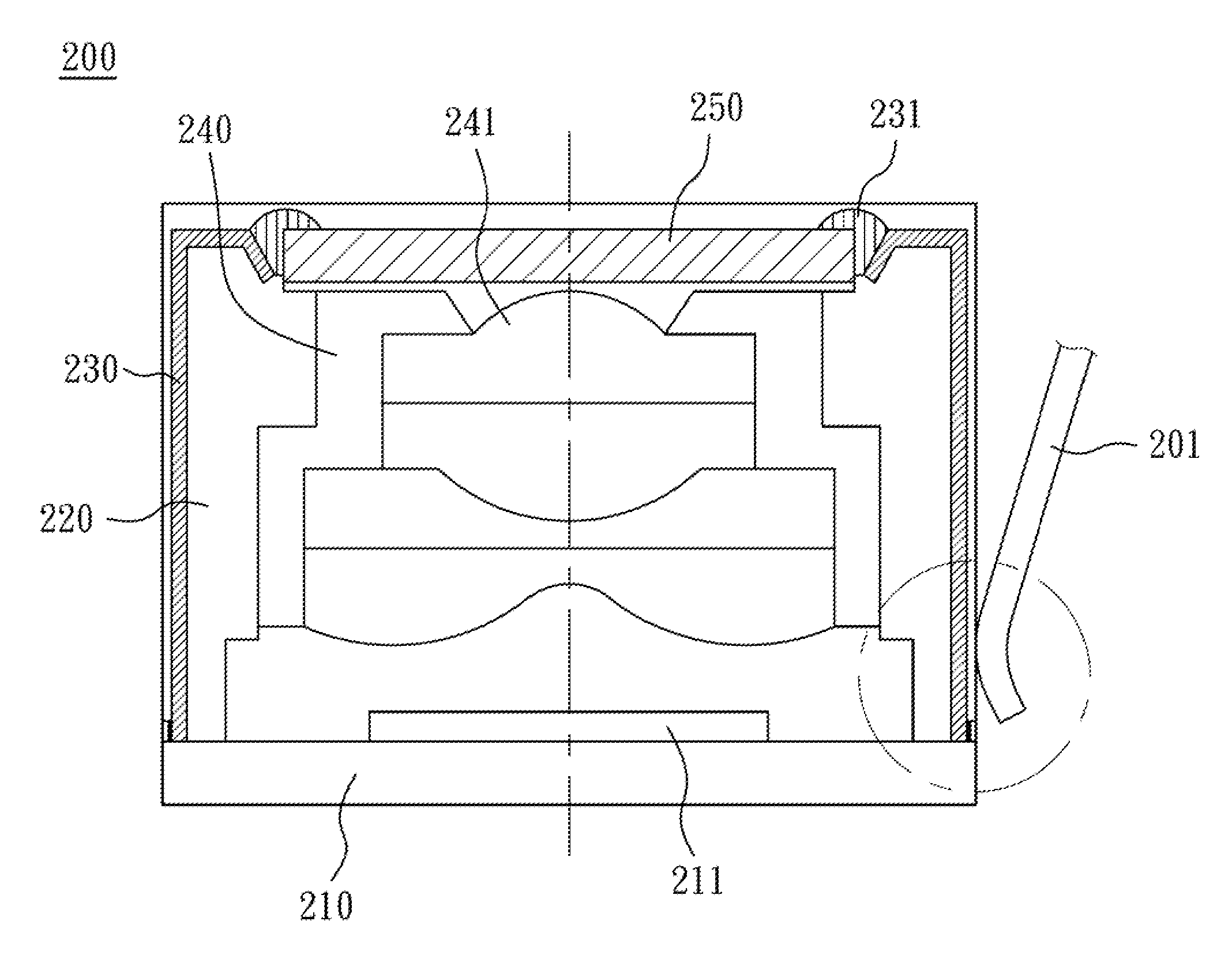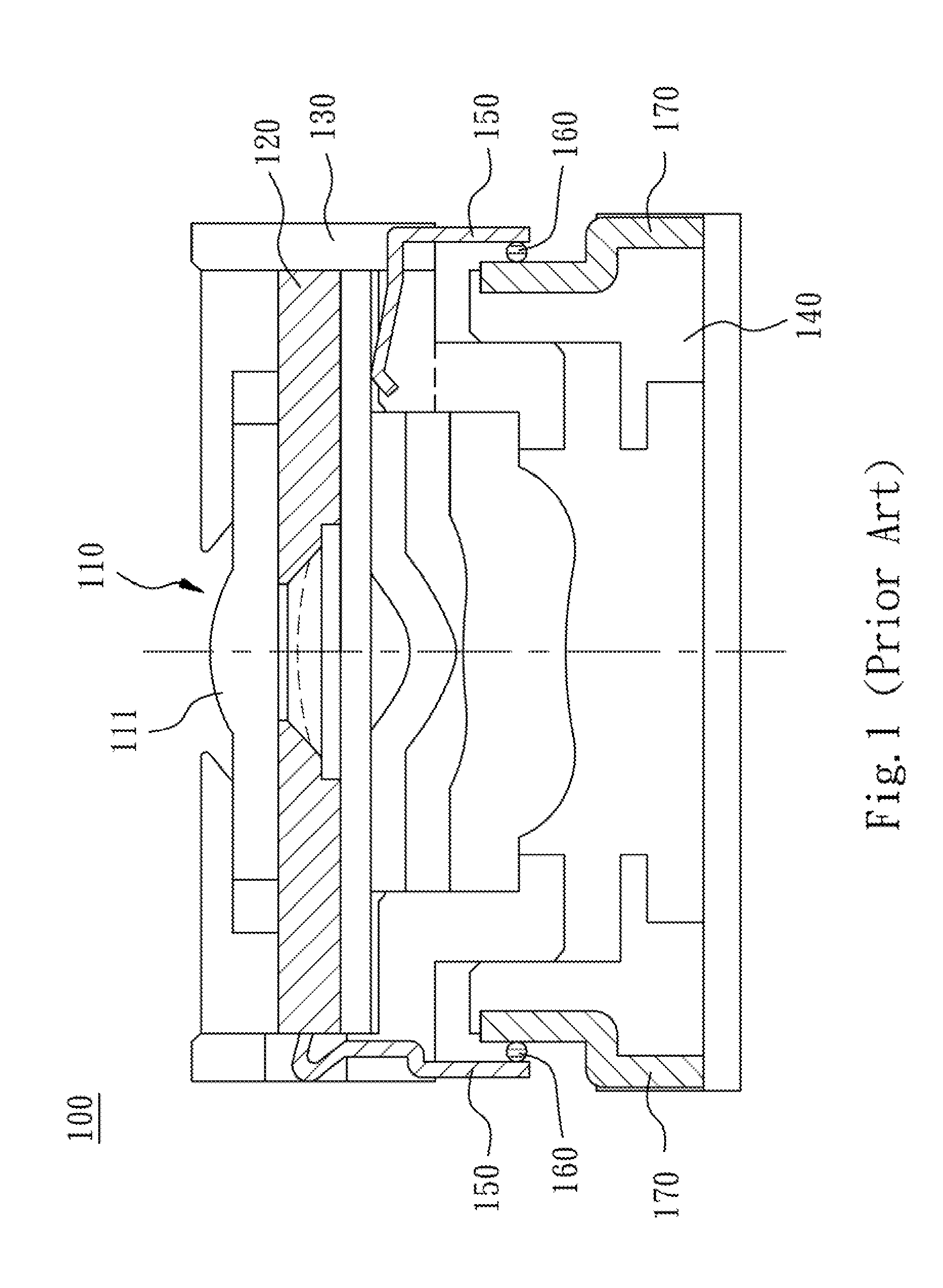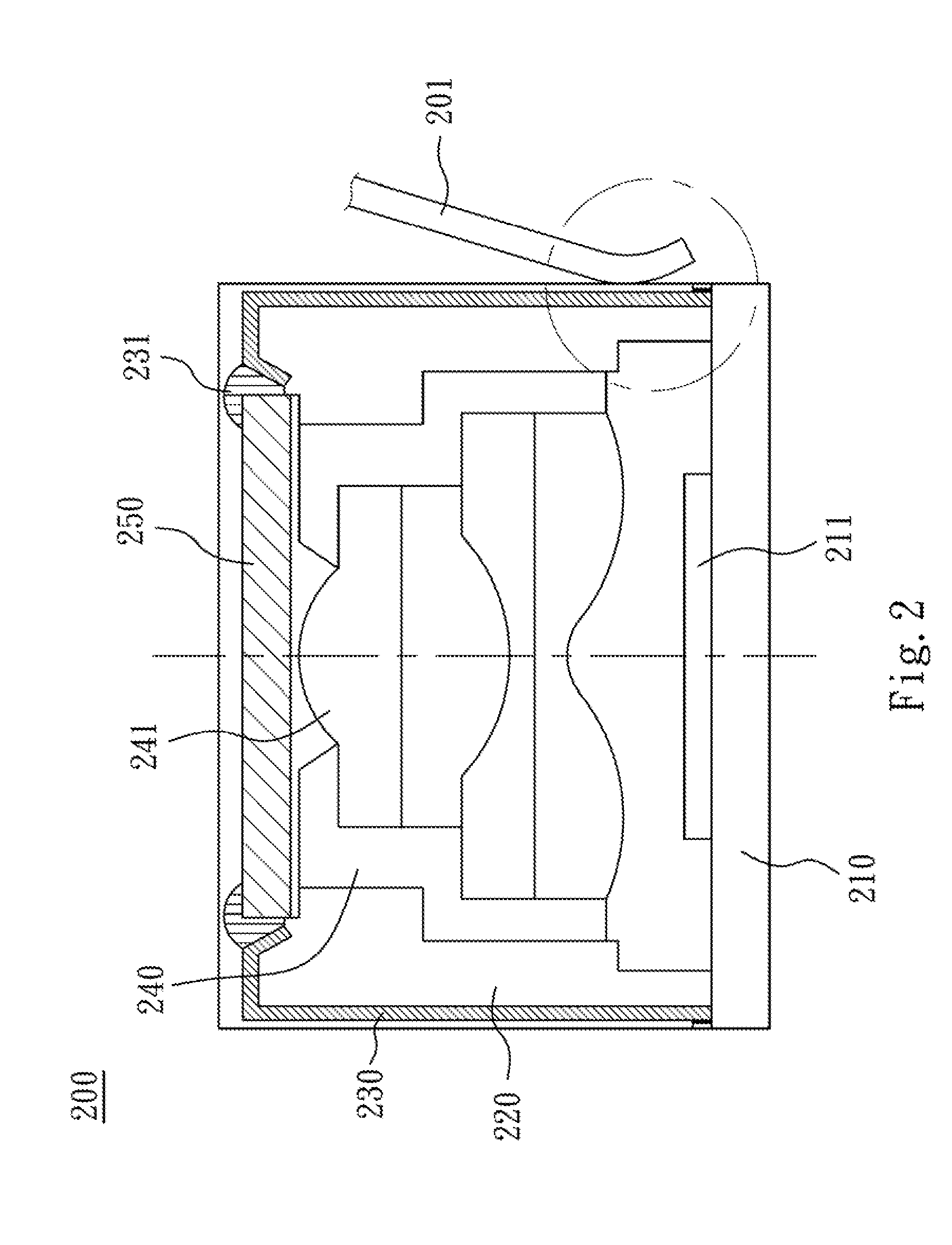Camera Module
a technology of camera module and holder device, which is applied in the direction of mounting, instruments, camera body details, etc., can solve the problems of polluting the production environment and unwanted particle generation
- Summary
- Abstract
- Description
- Claims
- Application Information
AI Technical Summary
Benefits of technology
Problems solved by technology
Method used
Image
Examples
first embodiment
[0017]FIG. 2 is a schematic structure diagram of a camera module according to the present invention. FIG. 3 is a partially enlarged diagram of the camera module shown in FIG. 2. As shown in FIG. 2 and FIG. 3, the camera module 200 includes a base board 210, a holder 220, a conductive circuit 230, a camera lens 240 and an electric-controlled light permissible element 250. There is a light sensing element 211 disposed on the base board 210, and a control signal is issued from the base board 210. The holder 220 is connected to the base board 210 and is arranged on the outer side of the base board surrounding the light sensing element 211.
[0018]The conductive circuit 230 is arranged on the holder 220 and is electrically connected to the base board 210 for receiving the control signal, in which the conductive circuit 230 does not extend out of a surface of the holder 220. The phrase “the conductive circuit 230 does not extend out of a surface of the holder 220” as used herein may include...
second embodiment
[0022]FIG. 4 is a schematic structure diagram of a camera module according to the present invention. As shown in FIG. 4, the camera module 300 includes a base board 310, a holder 320, a conductive circuit 330, a camera lens 340 and an electric-controlled light permissible element 350. The camera module 300 of the present embodiment and the camera module 200 of the aforementioned embodiment are substantially similar, but are different in the relative positions of the light sensing elements 211, 311, the camera lenses 240, 340, and the electric-controlled light permissible elements 250, 350.
[0023]The camera module 200 of the aforementioned embodiment arranges the camera lens 240 between the electric-controlled light permissible element 250 and the light sensing element 211, but the camera module 300 of the present embodiment arranges the electric-controlled light permissible element 350 between the camera lens 340 and the light sensing element 311. The differences between the two embo...
third embodiment
[0025]FIG. 5 is a schematic structure diagram of a camera module of the present invention. FIG. 6 is a partially enlarged diagram of the camera module shown in FIG. 5. As shown in FIG. 5 and FIG. 6, the camera module 400 includes a base board 410, a holder 420, a conductive circuit 430, a camera lens 440 and an electric-controlled light permissible element 450. Because of many similarities between the camera module 400 of the present embodiment and the camera module 200 of the aforementioned embodiment, only the differences there between are described hereinafter.
[0026]The conductive circuit 430 is arranged on the holder 420 and is electrically connected to the base board 410 for receiving the control signal, in which the conductive circuit 430 does not extend out of a surface of the holder 420. The present embodiment will describe the situation that the conductive is circuit 430 extends as far as the boundary aligned with a surface of the holder 420. The conductive circuit 430 of ...
PUM
 Login to View More
Login to View More Abstract
Description
Claims
Application Information
 Login to View More
Login to View More - R&D
- Intellectual Property
- Life Sciences
- Materials
- Tech Scout
- Unparalleled Data Quality
- Higher Quality Content
- 60% Fewer Hallucinations
Browse by: Latest US Patents, China's latest patents, Technical Efficacy Thesaurus, Application Domain, Technology Topic, Popular Technical Reports.
© 2025 PatSnap. All rights reserved.Legal|Privacy policy|Modern Slavery Act Transparency Statement|Sitemap|About US| Contact US: help@patsnap.com



